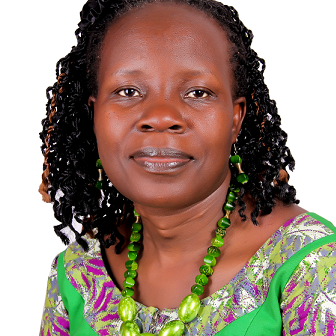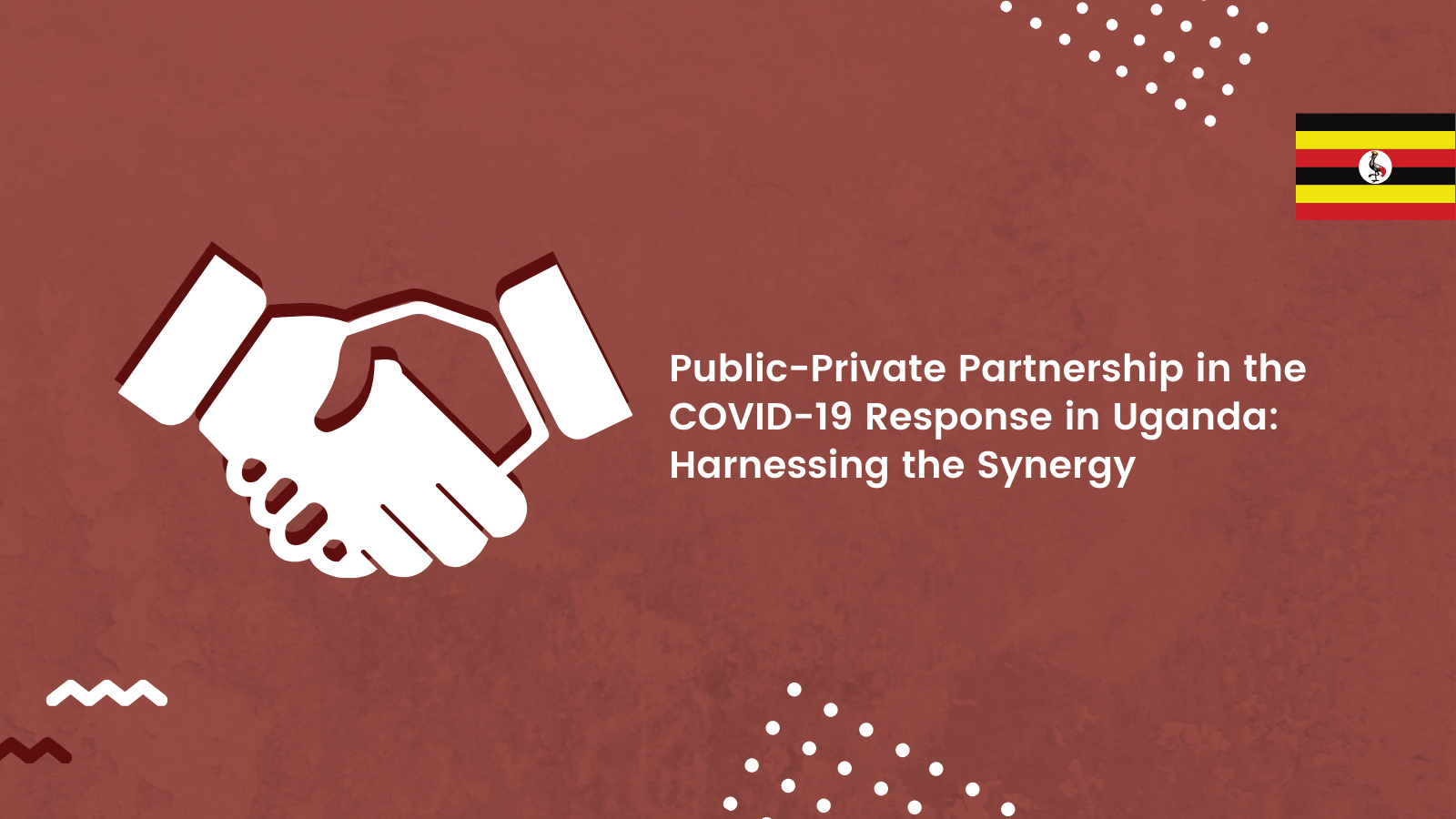On a Monday in the first week of August 2020, I walked into a private clinic at a local town, for consultation and health care since I was feeling unwell. As always, I interacted with the General Practitioner (GP) at the clinic, who went ahead and diagnosed me and took some samples of my blood for testing. As I waited for the results, I engaged the GP on how I had been ruled out as a COVID-19 case, given they had not even asked me about COVID-19 related symptoms.
The kind of clinical assessment I received is typical of what one would expect in many private and even government facilities, with higher chances of poorer assessments in the informal private sector within communities. Uganda operates a pluralistic health system where the public and private sector complement each other in health service provision. The private sector itself is heterogeneous with big hospitals, clinics, pharmacies and medicine outlets, and informal providers. The Annual Health Sector Review (AHSR) statistics show that the private sector delivers almost 50% of health services in Uganda. Within distant, resource and geographically constrained communities, retail drug outlets provide between 40 – 70% of health care to those communities in Uganda. The private sector has an extended network of infrastructure that stretches to areas with limited or sometimes, total absence of public facilities. Unfortunately, even with this magnitude of complementarity in health service delivery, the initial fight against COVID-19 mainly focused on the public facilities. The private health care providers were literary left out of the COVID-19 fight. In fact, public facilities that were accredited to provide COVID-19 care were formally gazetted and provided with reasonable support to prepare them to offer care for COVID-19 patients. Perhaps, this may partially explain my experience with the GP at the clinic who may not have known much about how to screen for COVID-19 due to a possible lack of training support and diagnostic capacity.
Recognizing the place of the private sector, the World Health Organization, in a 2020 statement, encouraged governments to identify mechanisms to leverage private sector actors in ensuring not only the continuity of essential non-COVID-19 care, but also supporting national responses to the COVID-19 pandemic. Uganda has now reached phase four of the pandemic characterized by wide-spread community transmission. As of January 2021, the country had reported over 38,000 cases with over 200 deaths, with the numbers projected to rise following a recently concluded general election. Already, the Ministry of Health has reported that hospitals have been overwhelmed by COVID-19 patients. This has gradually forced suspected cases to seek diagnostic services at private laboratories and patients are increasingly seeking care in private health facilities – that are charging exorbitant fees for critical care. Relatedly, with the increasing community transmission, private facilities and outlets within communities will likely be the next hotspots for COVID-19 transmission, unless health workers are adequately trained and equipped. The Ministry of Health has recently recommended home-care for asymptomatic COVID-19 patients and those with mild disease, While the failure to fully incorporate the private sector in the COVID-19 fight ab initio was clearly a missed opportunity, the current situation of the pandemic offers yet another real opportunity to compliment the government’s effort. The specific areas where the private sector could be instrumental in the fight against COVID-19 may include, but are not limited to:
- Supporting or boosting the laboratory and diagnostic services capacity. Initially, only the Uganda Virus Research Institute (UVRI – the country’s virus research institute), was accredited to handle rtPCR tests for COVID-19. However, as of October 2020, an additional 14 laboratories have been accredited as the number of cases of COVID-19 increased and these additional laboratories included private laboratories. This significantly reduced the lead time and expanded diagnostic services, enabling international travelers to meet the COVID-19 testing requirements, which was one of the preconditions for lifting restrictions on international travels. The current challenge is the emergence of unaccredited laboratory sites due to increasing demand for diagnostic services and this raises quality concerns. It is apparent that the government must work with and support the private sector to expand diagnostic services
- Continuity of essential health care. The private sector can also play a key role in closing the gap for essential care especially for malaria, family planning, immunization, HIV/AIDS, and other critical RMNCH services, particularly in locations where public facilities are overwhelmed as they focus mainly on the provision of COVID-19 services.
- Resource mobilization and innovation. The private sector, including corporate institutions, individuals, businesses, etc., are well placed to support COVID-19 efforts. The private sector has great strategic opportunities for innovation, efficiencies, and resource mobilization, and to some extent, some level of trust, and these are critical attributes for the fight against COVID-19. In the early period of the onset of COVID-19, the Ugandan Government called on the private sector to support government effort. Through a crowd-sourcing approach, a lot of resources were mobilized both in cash and in kind. The donations included vehicles, food, mattresses, beds, handwashing equipment and supplies, sanitizers and masks among others. For countries that are resource-constrained, the private sector presents an opportunity to rethink the health financing framework to seek new, feasible, and sustainable sources of health care financing without necessarily relying on traditional approaches that are already constrained.
- Training and capacity building for community actors. Some non-state actors have been actively involved in training community health workers to create awareness, others have provided resources for messaging on various media platforms, including telecommunication companies, media companies, and other multimedia platforms, and these have been critical in mass education and information on the COVID-19 risks and the standard operating procedures to prevent its transmission.
- Provision of COVID-19 care services. As already indicated, initially government gazetted COVID-19 treatment centers/facilities and these were specifically government facilities. However, the prohibitive cost of travel and transport to the gazetted facilities may limit access to care for COVID-19. For example, you may find that patients residing in up to 5 districts have to travel to one regional referral hospital that has been gazetted to provide COVID-19 care. Accrediting or working with private providers within those localities would make it easier for such patients to access care from private facilities within their districts.
Strategic interventions to enhance role of private sector in the COVID-19 era
Below, we summarize a range of strategic options that Uganda could adopt in ensuring the private sector is able to, not only support the continuity of routine health care services, but also the COVID-19 national response, within the framework of the “whole of society” approach for COVID-19 response in Uganda.
- Government support for private sector innovation. Government should support local initiatives to provide equipment such as oxygen cylinders, N 95 Masks and supplies and drugs such as oxygen and dexamethasone that can be easily provided by the private sector in large amounts. Private sector can also harness more IT technology that is necessary for the tracking of cases, monitoring and referral of asymptomatic cases whose conditions may change and require more specialized care.
- Capacity strengthening for private providers to enable them provide quality COVID-19 services. The government should intentionally train private sector providers and provide other additional skills and resources that they lack so that they are able to competently support the public facilities that are currently providing care for COVID-19 cases. As mentioned above most of the gazetted facilities are now full and unable to cope with the increasing number of cases. Furthermore failure to equip private providers with appropriate knowledge, skills and protective equipment may put the private providers at risk of contracting COVID-19 as they care for asymptomatic COVID-19 patients who may seek care for this and/or different illnesses.
- Data integration. Government needs to speed up efforts for the integration of COVID-19 data from both public and private providers into the DHIS 2 and other national epidemic reporting systems. This is critical for the accurate tracking of COVID-19 cases and decision making about their management.
- Contractual arrangements. Currently the private sector is charging patients prohibitive sums of money since they are not receiving any kind of subsidy with regard to meeting the critical care costs of COVID-19 patients. The terms of their engagement are also not clearly spelt out. Government needs to put in place transparent contracting and purchasing arrangements that clearly define, roles, incentives, expectations, and relationships so as to enhance private sector engagement.
- Building private sector trust as a precondition to meaningful engagement and dialogue. Government needs to establish an inclusive approach to dialogue with the private sector and co-create a policy framework and solutions to the challenges of managing the pandemic.
This Blog was written by the SPARC Team at the Department of Health Policy Planning & Management, School of Public Health, Makerere University, Uganda. Contributions from Mr. Mayora Chrispus, Dr. Elizabeth Ekirapa-Kiracho, Dr. Aloysius Ssennyonjo, Mr. Richard Ssempala & Prof. Freddie Ssengooba.

Elizabeth Ekirapa is a Senior Lecturer at Makerere University School of Public health. She holds a doctorate in health systems research and has over 15 years of experience in health systems research. Her research work is centered around maternal health, health systems, economic evaluation and health financing.

